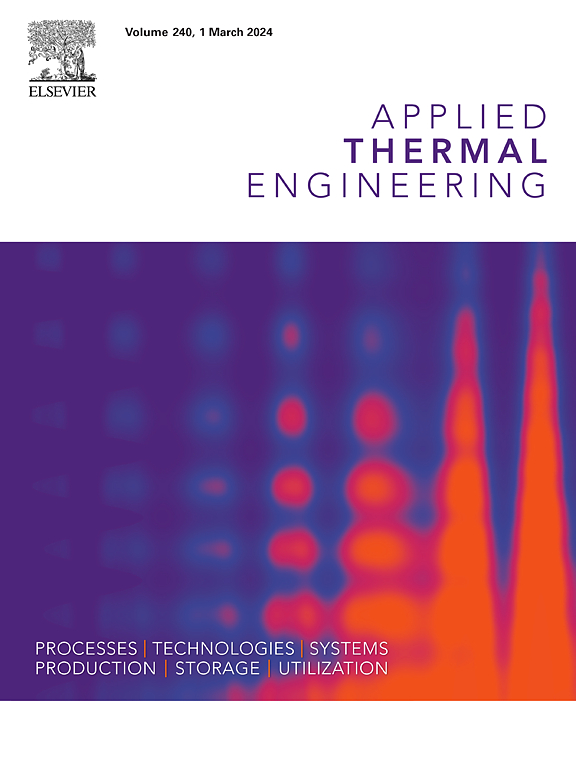A study of wood pellet and waste plastics oxy-combustion with oxygen staging in a fluidized bed reactor
IF 6.1
2区 工程技术
Q2 ENERGY & FUELS
引用次数: 0
Abstract
This study was the first to investigate the oxy-combustion of wood pellets and polyethylene (PE) combined with secondary oxygen injection. It began with fuel property analysis and thermogravimetric evaluation, including activation energy, combustion characteristics, and synergistic effects. Co-combustion experiments were conducted in a bubbling fluidized bed, examining parameters like fuel-blending ratio (BR), oxygen concentration, and secondary oxygen ratio (SOR). Synergistic effects between wood pellets and PE were observed in three stages: promotion from 240–400 °C, inhibition from 400–480 °C, and promotion from 480–560 °C. Activation energy analysis showed it rose with O2 concentration, except for PE. PE added to wood pellets caused tar coverage, delaying reactions and reducing combustion characteristic index. In fluidized bed experiments, higher O2 concentrations decreased temperatures in the lean phase, while higher SOR reduced temperatures in the dense phase. Increased oxygen levels raised NO emissions, but higher SOR extended gas residence time, reducing NO levels. While CO concentrations decreased with increasing O2 concentration, local sintering under 40 % O2 may lead to increased CO emissions. The highest exergy efficiency without secondary oxygen was achieved at 25 % O2/75 % CO2 and 40 % PE, reaching 55.67 %. Exergy efficiency improved with higher SOR, peaking at 60.1 % for 30 % O2/70 % CO2 under 30 % BR, and 30 % SOR conditions.
求助全文
约1分钟内获得全文
求助全文
来源期刊

Applied Thermal Engineering
工程技术-工程:机械
CiteScore
11.30
自引率
15.60%
发文量
1474
审稿时长
57 days
期刊介绍:
Applied Thermal Engineering disseminates novel research related to the design, development and demonstration of components, devices, equipment, technologies and systems involving thermal processes for the production, storage, utilization and conservation of energy, with a focus on engineering application.
The journal publishes high-quality and high-impact Original Research Articles, Review Articles, Short Communications and Letters to the Editor on cutting-edge innovations in research, and recent advances or issues of interest to the thermal engineering community.
 求助内容:
求助内容: 应助结果提醒方式:
应助结果提醒方式:


